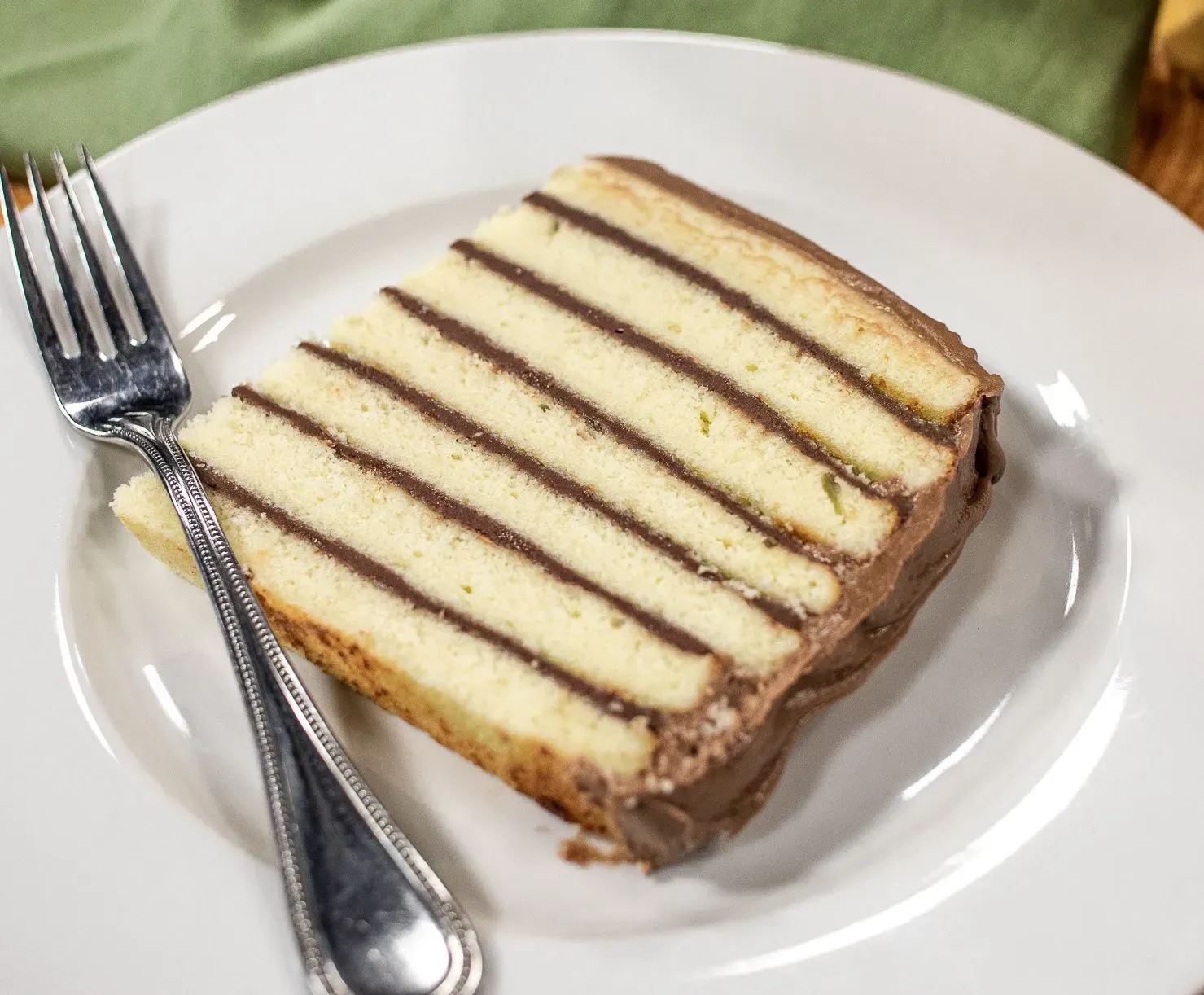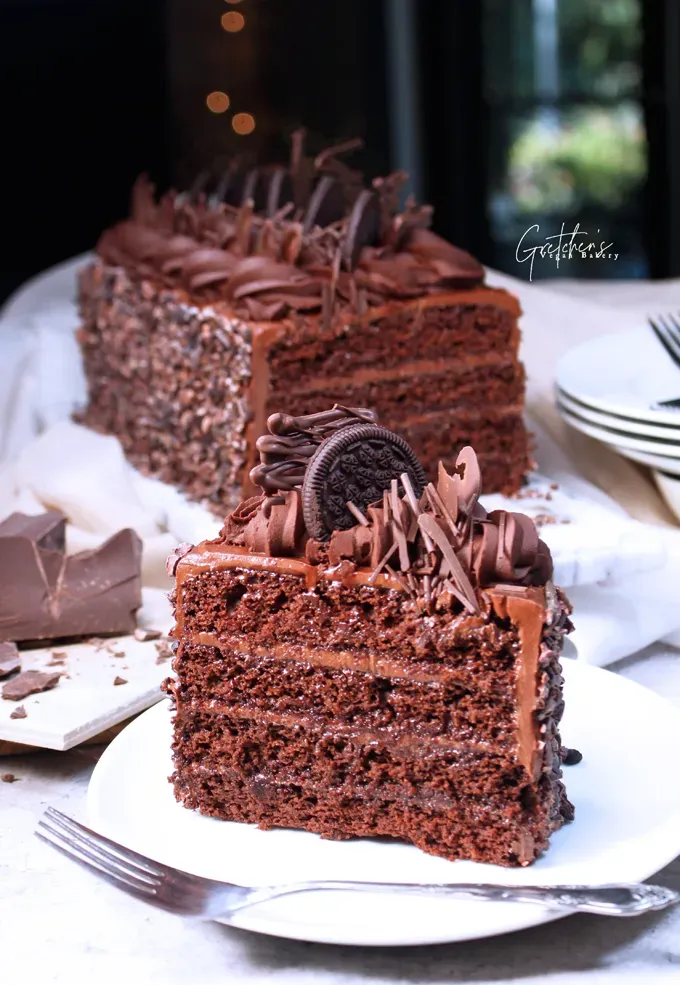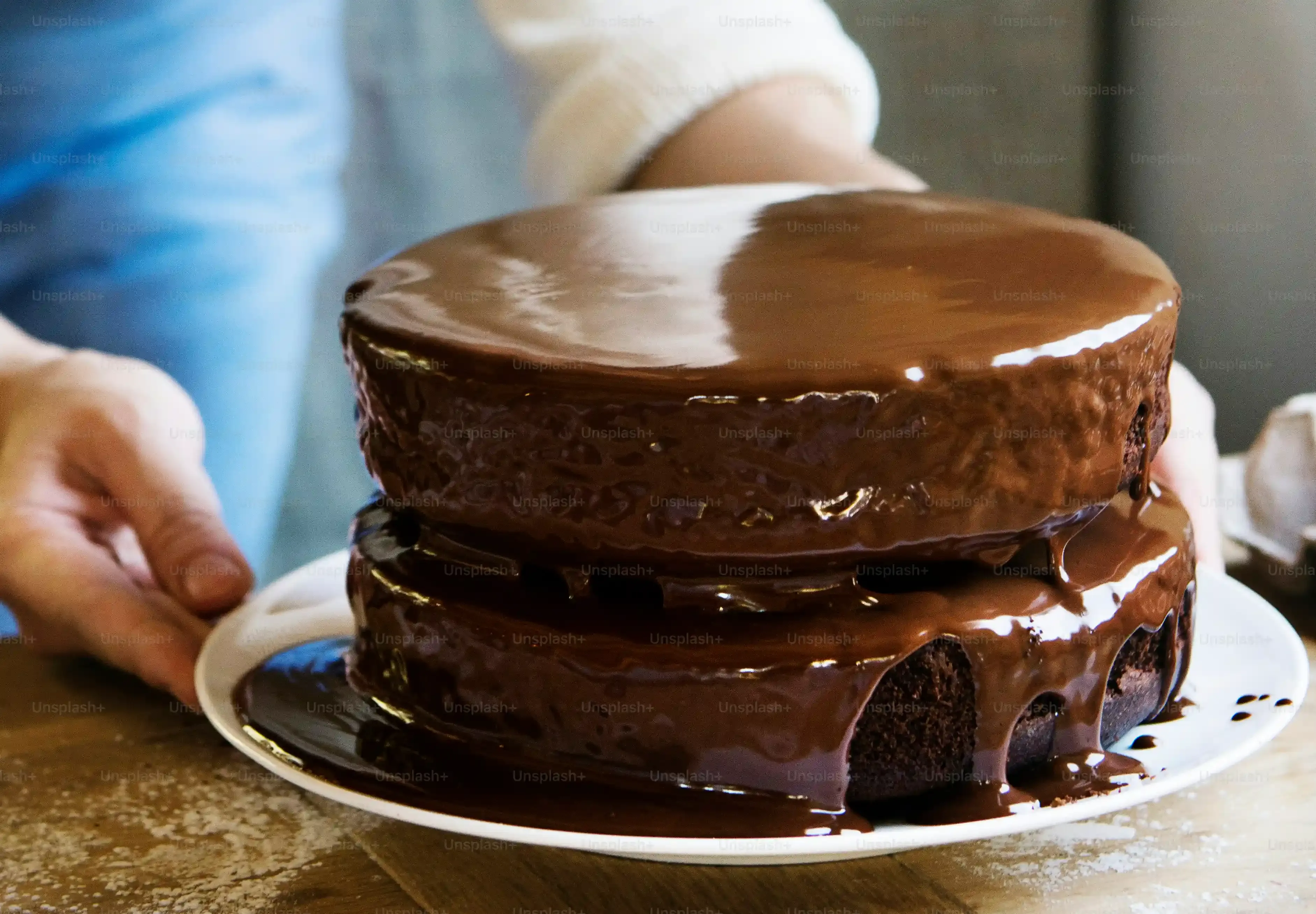Table of Contents
Let's be honest, the phrase "7 layer chocolate cake recipe" sounds a bit... extra, doesn't it? Like something pulled straight from a vintage cookbook, promising grandeur but maybe delivering a kitchen disaster. We’ve all seen those towering beauties in baker windows, looking utterly impossible to recreate at home. The idea of baking seven distinct layers, each thin enough to stack yet sturdy enough not to crumble, then slathering them with enough frosting to hold it all together – it’s enough to make you grab a box mix and call it a day.
A Slice of History: Why So Many Layers?

A Slice of History: Why So Many Layers?
Beyond Just Cake: The Showstopper Appeal
You look at a cake with seven layers and your first thought probably isn't "practical." It screams effort, celebration, maybe even a little bit of showing off. And honestly, that's part of its history. Cakes weren't always everyday affairs. For centuries, a cake, especially a multi-layered one, was a sign of wealth and status. More layers meant more ingredients (eggs, butter, sugar were expensive!), more time, and more skill. Think of it as the edible equivalent of a fancy gown or a carriage. A 7 layer chocolate cake wasn't just dessert; it was an event.
This tradition carried through, especially in regional American baking. States like Maryland have their famous Smith Island Cake, also known for its numerous thin layers, often ten or more, held together by cooked fudge icing. The principle is similar: thin layers maximize the frosting-to-cake ratio in every bite and create that impressive height. It wasn't just about stacking thick slabs; it was about creating a delicate structure that felt special and indulgent. The sheer visual impact was, and still is, undeniable.
The Fudge Factor: Icing as Structure
The "why so many layers" also ties directly into the frosting. Traditional multi-layer cakes, like the ones inspiring many a 7 layer chocolate cake recipe, often use cooked frostings, particularly fudge icing. This type of frosting sets up firmly as it cools. This firmness is crucial. When you're stacking seven thin layers, you need a stable "glue" between them. A soft buttercream might just squish out or let the whole thing lean like the Tower of Pisa after a couple of hours. The cooked fudge acts like mortar, providing both flavor and essential structural integrity.
Consider the alternative: a two or three-layer cake with fluffy frosting. That works because the layers are thicker and there are fewer of them. But with seven thin layers, you need that firm, almost candy-like frosting to bear the weight and keep everything aligned. It's a functional choice as much as a delicious one, a culinary engineering feat wrapped in chocolate.
Regional Multi-Layer Cake Examples:
- Smith Island Cake (Maryland): Often 8-10+ thin yellow cake layers with cooked chocolate fudge icing.
- Lady Baltimore Cake (Southern US): White cake with a fruit/nut filled boiled icing, sometimes made with multiple thin layers.
- Dobos Torte (Hungary): Seven sponge cake layers with chocolate buttercream, topped with caramel slices.
Mastering the Layers: Your 7 Layer Chocolate Cake Base

Mastering the Layers: Your 7 Layer Chocolate Cake Base
Thin is In: Getting Your Batter Right
so the secret sauce (or batter, rather) to a successful 7 layer chocolate cake recipe isn't a super-secret ingredient. It's about the consistency and quantity per layer. You're aiming for thin, even layers, not squat little pucks. This means your batter needs to be fluid enough to spread easily but not so thin it runs everywhere. A good recipe will specify the type and amount of leavening (baking soda, baking powder) carefully, because too much will make the cakes puff up too high and potentially dome in the center, making stacking a nightmare.
Think about it: seven thick layers would be a monstrous, unmanageable beast of a cake. The thinness is what allows the frosting to shine and prevents the whole thing from feeling dense and heavy. It also means faster baking times, which is key. We’re not trying to bake bricks here. We want delicate sponges that are just cooked through.
Even Spreading and Baking for Success
Getting the batter evenly into multiple pans is crucial for uniform layers in your 7 layer chocolate cake recipe. Weighing the batter and dividing it equally among your prepared pans is the most precise way. Eyeballing it rarely works out perfectly. Once the batter is in the pans, gently tap them on the counter a few times to help the batter settle and release any large air bubbles. This promotes an even rise.
Baking these thin layers requires vigilance. They cook quickly, and overbaking is your enemy. An overbaked layer will be dry, crumbly, and prone to breaking when you try to handle it. You want the edges to be lightly golden and the center to spring back gently when touched. A toothpick inserted should come out clean, but don't wait for it to be bone dry. Get them out of the oven, let them cool in the pans for just a few minutes, then turn them out onto wire racks to cool completely. Resist the urge to rush this cooling process.
Tips for Perfect Cake Layers:
- Use the right size pans (typically 8 or 9 inches).
- Prepare pans meticulously: grease and flour, or use parchment circles.
- Weigh your batter for even distribution.
- Tap pans to remove air bubbles.
- Bake only until a toothpick comes out with moist crumbs, not completely clean.
- Cool completely on wire racks before handling or frosting.
Fudge Frosting & The Stack: Assembling Your 7 Layer Chocolate Cake
The Magic of Cooked Fudge Frosting
Alright, you’ve got your seven beautiful, thin cake layers cooling. Now comes the part that really defines this specific 7 layer chocolate cake recipe: the cooked fudge frosting. This isn't your average whipped buttercream or ganache. This is old-school, stovetop magic. It involves cooking sugar, milk, and butter to a specific temperature, then adding chocolate. Why go through this extra step? Because this type of frosting sets up firm, almost like a soft fudge candy, as it cools. This is absolutely essential for building a skyscraper of cake layers.
Without that firm structure, your carefully baked layers would just slide around or compress the frosting below, leading to a leaning tower situation that would make Pisa look stable. It's the culinary concrete of this particular build. Getting the temperature right is key here – too low and it won't set, too high and it can become grainy or hard. A candy thermometer isn't optional; it's your best friend in this process. Think of it as investing in structural integrity.
Cooking and Cooling the Fudge "Mortar"
Making the frosting for your 7 layer chocolate cake recipe starts in a heavy-bottomed pot. You combine the sugar, milk, and butter, stirring until everything is dissolved and the butter is melted. Then comes the crucial part: boiling without stirring until it reaches the specified temperature, usually in the ballpark of 230-235°F (110-113°C), which is the soft-ball candy stage. This is where the sugar crystals do their thing to create that setting texture. Once it hits the temp, take it off the heat and *then* add your chocolate and vanilla. Let it sit for a minute to melt the chocolate, then stir until smooth.
Here's the tricky bit: you need to let it cool slightly, but not too much. As it cools, it starts to thicken and set. You want it cool enough to handle and spread without melting the cake layers, but warm enough that it's still pliable. If it gets too cool, it becomes stiff and difficult to work with. It's a race against time, a delicate balance between molten chocolate goodness and setting fudge. Have your cake layers ready to go before you even start cooking the frosting.
Fudge Frosting Temperature Guide:
- Below 220°F (104°C): Likely won't set properly.
- 230-235°F (110-113°C): Soft-ball stage, ideal for a frosting that sets but remains relatively soft.
- Above 240°F (116°C): Moving towards firm ball/hard ball, frosting will be too hard and potentially grainy.
The Grand Assembly: Stacking Your Layers
With your layers cooled and your frosting at the perfect, slightly-cooled-but-still-spreadable stage, it's assembly time for your 7 layer chocolate cake recipe. Place your first layer on your serving plate or cake stand. Working quickly, spread a relatively thin, even layer of frosting over the top, going almost to the edge. Don't pile it on thick; remember, you have seven layers to cover. Place the next cake layer directly on top, aligning the edges as best you can. Press down *gently* to help it adhere.
Repeat this process, stacking layer after layer, frosting each one before adding the next. You'll use most of the frosting for between the layers. Once the final layer is on, use the remaining frosting to cover the top and sides. Don't aim for bakery-perfect smooth sides unless you're a masochist or have hours to spare. A slightly rustic look is perfectly acceptable and, frankly, expected with this type of frosting. The key is to work efficiently before the frosting sets completely.
Baking Bliss: Tips, Tricks, and What to Expect

Baking Bliss: Tips, Tricks, and What to Expect
The Sweet Reward: What to Expect After the Stack
So you’ve conquered the layers, wrangled the fudge frosting, and somehow managed to stack seven delicate rounds into something resembling a cake. Congratulations. You've tackled a proper 7 layer chocolate cake recipe. Now, what happens? Patience, my friend. This isn't a cake you slice immediately after frosting. That cooked fudge needs time to fully set and firm up, binding those layers together like edible glue. Trying to cut into it too soon is like trying to cut a loaf of warm bread with a dull knife – messy, frustrating, and likely to end in tears (and cake crumbs everywhere). Give it at least a few hours, ideally overnight, at room temperature. This allows the flavors to meld and the structure to stabilize. Don't even think about refrigerating it unless your kitchen is a sauna; the fridge can dry out cake layers surprisingly fast and make the frosting rock hard.
The Final Slice: Was It Worth Seven Layers?
So, you've done it. Seven layers stacked, frosting holding firm (mostly), and a cake that looks like it means business. Was it as simple as whipping up a batch of brownies? Absolutely not. Did it require a bit more patience and pan-juggling than your average sheet cake? Undeniably. But standing back and looking at that finished 7 layer chocolate cake, knowing you built that towering structure from scratch, feels like a minor culinary victory. It’s a cake that demands a certain level of respect, both in its creation and consumption. And let's be honest, cutting into that many distinct layers of chocolate cake and fudge frosting? That's just deeply satisfying. Go ahead, take a bow. You earned that slice.
